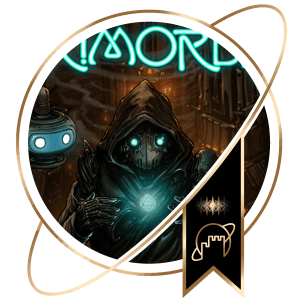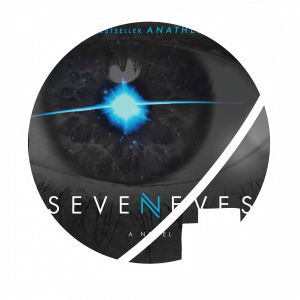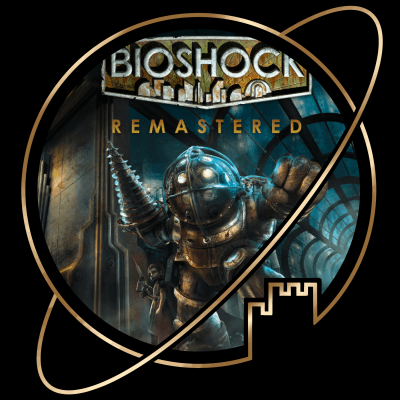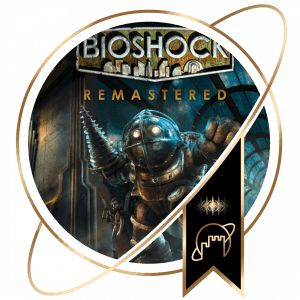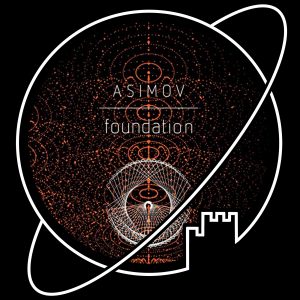Welcome to the Escape Velocity Collection!
We are an opinionated group of friends reviewing all sorts of fantasy and science fiction media. Don’t forget to get to know the curators and visit our curated Collection, where we discuss the stories that never cease to transport us to another world.
Will you escape with us?
LATEST POSTS:
- Board game designed by Jacob Fryxelius
- Artwork by Isaac Fryxelius
- Published by FryxGames
- Released in 2016
- 1-5 players
- Playing time: 120 minutes
In the 2400s, mankind begins to terraform the planet Mars. Giant corporations try to profit by having the largest share in its development. The temperature and the oxygen level are raised, and the ocean coverage is upped until the environment is habitable. In this 2-3 hour strategic board game, players play as one of the corporations and get victory points for their contribution to the terraforming and for advancing human infrastructure throughout the solar system.
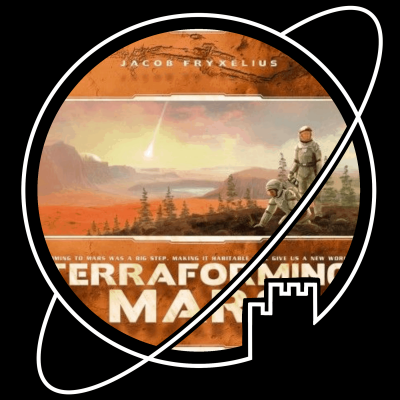

This has been my favourite game for the last two years. The first time I played it, I wasn’t too impressed. Good game, but nothing extra special. Then I got it for my birthday, played it and kept playing it.
Generally, I love the more complex strategic board games and I prefer playing with 3-5 players. Games like Gaia Project are amazing, because every part of the game has influence on another part. You need to plan for the long term, be flexible on the short term, and fail anyhow, while you never have enough of any of the resources. However, in reality I mostly play games together with my wife. She also loves board games, but generally not too complex or too long. She likes the more abstract two player games, but I often don’t feel like those 1-on-1 brain crunchers. I would rather develop my empire and collect points eurogame style. Enter Terraforming Mars, a game we both endlessly enjoy. Why? I think because it combines long-term strategy, short-term opportunism and building up your own empire.
Every round, every player gets their income consisting of money and resources. The height of the income is determined by the production values on the individual player mats, which can be developed during the game. Players get four cards that they can choose to buy or discard, and then starts the main action phase of each round. Here, players can do a couple of different actions, but mainly play cards to increase their production, get victory points or place new forests, cities or factories on the board. As the game progresses, players get more powerful and generally focus their efforts on one of the many ways to score victory points.
What I also love about this game is its attention to thematic detail. Designer Jacob Fryxelius has a PhD in chemistry and has tried to make the game as realistic as possible. The parameters that determine the end of the game actually are the scientific parameters for a habitable planet. The map of Mars with its volcanoes and craters where oceans could exist are geographically correct. The cards all represent technology that could exist and actually more or less cause the effects the cards do, accompanied by some nice flavour texts.
Finally, I want to compliment the design of the pictograms that make the game almost language independent. The only problems are that I do not have enough space when production is high (you can’t go further than 19 on the player mats) and that the term ‘resource’ is used for every kind of thing you can collect, whether it is an animal or an electricity token. Every resource is represented by a cube, I think to allow the cards to span a broad thematic range. It is very efficient game design, but a little confusing for new players.
In short: awesome game, always playing this when I have the chance.
Some elaboration on the expansions Prelude, Colonies and Hellas & Elysium
I like to play with the expansion Prelude, which gives you a little boost at the start of the game. It speeds up the slow start when players do not yet have much of a production going and gives some direction for your long-term strategy. For example, you get a +1 production of titanium, so that (1) you already have some extra income and (2) you will focus on cards that can be bought with titanium. The Prelude-cards do cause some unbalance in the starting position of players now and then, but not so much that I mind. This expansion also includes some new cards for in your standard deck.
Sometimes I combine Prelude with the expansion Colonies. Colonies gives a couple of external places to gain resources for the player who ‘flies over’ there. It is nice to change up the play, but the general opinion of the people I have played this with is: ‘It does not bother me‘. Make of that what you wish. This expansion also includes new cards that often have something to do with the colonies and two new corporations.
I do really like the expansion Hellas & Elysium, which gives you two new maps to play on from other sides of Mars, accompanied by their own milestones (first player to get this gets points) and awards (player who has most of this at the end of the game gets points). These maps have really helped to keep our experience fresh.
Not really an expansion, but worth a mention is the draft-variant. I like to do it at the start when you get 10 random cards to choose your starting hand. When you draft you pick one and slide the rest to the player to your right. You get a new hand of 9 from the player to your left, pick one, and give 8 to the next player. So you continue until all cards are dealt. This balances each players hand.
You can also do this every round when cards are dealt, but that is too much for me. It slows the game down considerably and pushes you to play ‘negatively’: you choose cards to prevent another player from having them instead of cards you want yourself. That defeats the charm of the game a bit for me.

I’m a board game fan, but when it comes down to it, I play surprisingly few board games – most of my time is eaten up by other hobbies. Whenever I do play, however, there is probably an upwards of 80% chance Key is also at the table.
As such it is no surprise that I have played his favourite game, Terraforming Mars, quite a few times by now.
Admittedly, as a player of wargames and table top roleplaying games I am so used to rulebooks over an inch thick that I am probably not the best person to evaluate whether a board game is complex and whether it is easy to get into. But I think Terraforming Mars has found a great balance between complexity and replayability on the one hand, and storytelling and theme on the other.
I think it would take most people at least one game to get used to the mechanics, but even if your chances of winning are probably going to be poor, the game will still be fun: the ‘base building’ aspect of it is very satisfying. The theme really helps here as well – it is just a lot of fun to imagine smashing asteroids into the surface, and to see the terraforming project grow from some microbes on the ice to – eventually – the first zoo on Mars.
By the second game, I think most people will get the hang of it, trying to find synergies between their cards, building up resources and claiming surface area rapidly. From there, not even the sky is the limit. Because of the game’s tall stack of cards drawn at random, which determine the projects/inventions you get to build, no two games play the same. Yes, this random element can screw you some times, but generally speaking, enough cards pass through your hand to mitigate that chance.
This is even more so when including a couple of the expansion sets, which help the game get off to a more rapid start and give you direction right from the get go – addressing probably the most important issues to repeat players.
Finally, I love the ‘hard’ sci-fi aspects of the game. Isaac Fryxelius has clearly given some thought to the actual mechanics of terraforming a planet (and had a close look at Kim Stanley Robinson’s homework on Red Mars). As a result, it even feels like playing the game gives some insight into what such a huge undertaking as a terraforming project could look like – science fiction at its best!
Tagged:
- Card game designed by Thomas Sing
- Artwork by Marco Armbruster
- Published by KOSMOS
- Released in 2019
- 2-5 players
- Playing time: 20 minutes
In this co-operative trick-taking game players set out as astronauts on a space adventure looking for a ninth planet. The journey extends over 50 missions, a kind of levels, getting increasingly harder to complete. Communication in space is not easy, so everybody has to work together closely to not be sucked into the void of space.


What a fun little game. It offers a fresh twist on the popular genre of cooperative trick-taking games of recent years like Hanabi or The Game. The goal of most missions (levels) is for one or more players to get one or more tricks with a specific card in it. However, the twist in these type of games is always in the manner of communication. This time, the only way to communicate your cards is by placing a card in front of you and placing a communication marker at one of three positions on it, meaning either this is your highest card of this color, your lowest card or your only card.
I have already started four crews and keep having fun with this game. Keeping score is easy, simply the amount of tries to complete a mission, but this game is not about the score. It is about trying to work together, cursing on the cards, cheering when a risk pays off and crying when every player seems hopelessly incapable. Never me, of course.
See also:
Tagged:
- Video game developed by 2K Games
- Directed by Ken Levine
- Released in 2007
- Platforms: Microsoft Windows, Xbox 360, Xbox One, PlayStation 3, PlayStation 4, Mac OS X, iOS, Nintendo Switch
Rapture was a place unlike any other. Away from prying eyes, deep on the ocean floor, business magnate Andrew Ryan built his ideal city. He picked artists, scientists and industrialists to help him build the society of his dreams, where no man was limited by “parasitic” government. However, the city soon crumbled as unregulated “genetic enhancements” known as plasmids drove inhabitants of the city to madness. Now it is 1960, and one could only wish that Rapture were deserted. Instead, giant guardians roam its halls, trailed by little girls who loot corpses. The former fortune seekers scavenge the halls, killing to survive. Through audio logs, the story slowly unfolds as you fight your way through the desolate underwater city.

Bioshock is one of the first “real” video games I played. Like, I’d played some strategy games as a kid, and I’ve played some verrry old First Person shooters as a baby, basically – but I’d never properly played a shooter from start to end until I played Bioshock. To be honest, the genre had never really interested me. I don’t generally like military stuff, and I usually prefer using magic or a bow and arrow over using a gun. I’m not sure how I came to even play this game, to be honest. If I recall correctly, Matt sold me his X-Box 360 and this is one of the games that came with it.
Bioshock is one of my absolute favourite pieces of media of all time. I actually bought the complete collection on the Switch despite already owning it on several platforms. I did a course on political expression in video games in college, and I presented about Bioshock. I even own the tie-in novel, which I found at the thrift store, lol. I’ve even cosplayed Elizabeth from Bioshock: Infinite.
What sets Bioshock apart for me, is the setting. I love old stuff. Walking into Rapture for the first time was… terrifying, but unlike anything I’d ever seen before. Even that doesn’t quite cover it, though. I’m not usually a big fan of horror. Bioshock is definitely scary, and the splicers are basically fast zombies (my absolute nightmare), but it doesn’t feel gratuitous.
I’m not the best at following a story like Bioshock’s. The main story takes place in a series of audio logs, and while they give a good idea of the “vibe” of Rapture during its hay-day, I find it hard to fully understand what actually happened in the City. The tie-in novel really helped with that, though. Not that you need to read the book to understand the video game. I wouldn’t have gone out of my way to buy the book if I hadn’t stumbled upon it in the least likely place ever.
Other things that I love about Bioshock are the sound design and the atmosphere in general. If you love vintage stuff, desolate places and old-timey music, I’d definitely check this game out. If you’re not scared of horror, that is.

Here I am, rating BioShock three and a half stars – while my curator page says it’s one of my favourite franchises, ever. Allright then – what’s going on?
I really love Bioshock. I remember when I read the first preview for the game in an honest to god paper magazine, with these beautiful atmospheric screenshots and a really exciting promise of a mysterious dieselpunk world full of story and invention. When I finally got to play the game (well after its release, because back then I was a kid and did not have the money to fork over full retail price for new games (remember, even then all my spending money went into buying GW plastic crack)), it blew me away. There was so much to love, from the story and the characters to the beautiful world and the exciting mix of magic and gunplay. An absolute 5-star experience.
So why only a 3,5 star rating? Not bad, but maybe a bit meagre for a game so near to my heart, right?
The honest answer is, it’s nearly fifteen years old. Were I transported back to 2007 and writing this review, I would be stuffing BioShock down your throat will all the strength of my 13-year-old muscles. But in 2020s, I feel the game is starting to show its age. Yes, there has been a remaster, but it could not erase all the game’s problems.
BioShock solves the problem of limited computing power that many shooters had those days by being set in a really cramped world of small, dark corridors with very few open spaces. It’s part of the premise, but it affects the gameplay as well. I found that a large part of the game is running down corridors in which you can hardly see anything. The darkness, the tight spaces and the relatively mediocre textures can be a bit disorienting at times, making it much harder to play for the modern player than, for example, a game from about the same time like Borderlands, set in an open world. BioShock‘s great innovation – being a shooter and an RPG at the same time – is now more or less standard, and measured against today’s yardstick your option are annoyingly (and really unnecessarily) restricted. The environmental storytelling feels a bit clunky because there are very few objects. Enemy character models are relatively samey. Etc. I still really love the game, and I think there are certainly people for whom it is worth picking up, but I would think twice before recommending it to anyone thinking of picking up the series now.
Having said that, it hurts to come to that conclusion – because even now some elements hold up so well. The setting, the story, the weird societal critique, the plottwists, the horror-elements… If you can look past its age, those elements of BioShock are certain to blow you away as much now as they knocked my socks off in 2007.
You can read more about my doubts and Lotte’s love for the game in our collection post.
Tagged:
- TV show created by Jim Mickle for Netflix
- Based on Sweet Tooth by Jeff Lemire
- Starring Nonso Anozie, Christian Convery, Adeel Akhtar, Stefania LaVie Owen, Dania Ramirez, Aliza Vellani, James Brolin, Will Forte
- First Aired on June 4th 2021
- 1 season and running
Ten years ago, a deadly virus spread through the world while pregnant women suddenly gave birth to hybrid babies, part human, part animal. As both mysterious occurrences could not be explained and led to discord, the modern society collapsed.
Gus is one of the first of these hybrids, who, because of his sheltered life, is blissfully unaware of the brokenness of the world. As he departs his childhood home to find his mother, he recruits the help of the grim Big Man to get to Colorado.
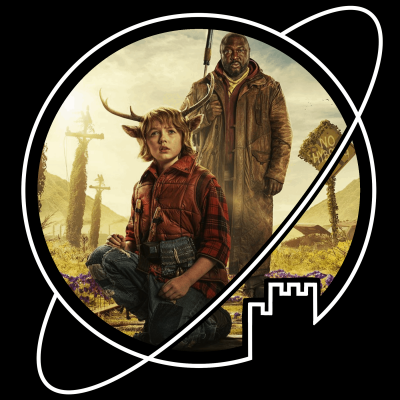

(This review relates to S1)
This post-apocalyptic fairy tale has excellent actors and beautiful cinematography. Found family and hope are the main themes of this story, along with morality and ethical conflicts. Even though the world in which the story takes place is very dark, the narrative finds a way to remain light. I found it very refreshing that all the main characters tried to do good to to the best of their abilities. Would recommend as a family binge-watch, however season one does end on a cliff-hanger. Fortunately, season two is in the making.

(This review relates to S1)
Jasmijn and I binged the first season in the first few days after it was released, and, even though I already expected I would like it, still I was pleasantly surprised by the overall quality.
Despite several child protagonists (all excellent actors, by the way) and a mostly lighthearted tone, Sweet Tooth handles some fairly dark themes one might expect from a post-apocalyptic setting. People die in gruesome (though offscreen) ways and unethical medical practices are at the core of this series’ plot. The writing maintains a precarious balance between these intriguing dark storylines and a story that is also aimed at a younger public. I thought this was masterfully done.
Some other thing I quite liked was the central theme of (found) family. All the main characters provide a different perspective on these concepts. A welcome change from most other post-apocalyptic settings, was the fact that most main characters were good-hearted and likeable.
As for the cinematography, the series delivers some stunning views. Also, most of the special effects, including the hybrid costumes, were convincing.
I would say this is a perfect series to watch as a family, because both younger and older generations will probably find something to their liking. In addition, those who want to carefully try their hands at a post-apocalyptic story might find Sweet Tooth an easily accessible medium to start.

(This review relates to S1)
I quite enjoyed Sweet Tooth. It is a show that somehow feels very familiar. Based as it is on a comic book series, the premise of the story is rather fantastical. Apart from that premise, there isn’t much in this story that surprised me. However, I don’t think a story needs lots of twists and turns to be good. Rather, I’d say that the best stories don’t depend on shock value to do their work for them.
Sweet Tooth, in many ways, feels like a story I’ve heard before. A boy goes on an adventure, and he meets good guys and bad guys along the way. The stakes are high, but mostly in a personal way. The world as a whole has already ended, but Gus’s world is still very much alive. While the show has several protagonists, it is Gus’s story that is the focus. With good reason: a big part of the appeal of the show is Christian Convery’s charming acting. I don’t really like kids, but he’s pretty cute.
While I did enjoy the show, I felt it perhaps might have landed a little better before we ended up in an actual global pandemic. I may be alone in this (though I doubt it, to be honest) but I’m sick and tired of post-apocalyptic stories. Still, I’d say that Sweet Tooth certainly isn’t a pessimistic story. It felt very comfortable to watch, if that makes sense.
See also:
Time to get to know the curators from the Escape Velocity Collection! How? By asking them the questions that really matter!
This week’s question is:
From all the many fantasy races that exist, which one resonates the most with you? And why?
Though I’d like to come up with something original, the simple truth is that I have a great fondness for dwarves. Something about their core (archetype) concept really speaks to me: Short but brave, creative and loyal, but often also prone to greed and unhealthy isolation. I think these traits lend themselves for perfectly tragic narratives, as well as great heroic stories.
However, I also like dwarves when they don’t fit the above archetype, so perhaps I simply like their aesthetics and the idea of misleadingly small people that easily perform great deeds…
Hmm, I think I’ll choose wizards. They are not always a race, granted, but always mysterious and powerful. They are mostly calm and deliberate, but regularly mixed with a little (or a lot) of crazy genius. Not that I am mysterious or powerful, but I like to see my self as intelligently composed most of the time, and a little crazy and unpredictable some of the time. Of course, I can only hope to aspire to their wizardy wisdom.
Ok, I guess I have to admit that I’m really just basic Elf trash. Like Jop, I wish I could come up with something original but this is all I’ve got. I’ll be honest: it’s mostly the aesthetic for me. The pointy ears, the fancy hair, the architecture… I feel like Elves are just like me but hotter? Though in D&D, I tend to gravitate towards half-elves.
Is it just an aspirational enjoyment of rich fancy people in fiction? I’m not above admitting that. I guess I like Elves the way I liked Blair Waldorf in Gossip Girl.
I find it hard to choose, but I definitely have a big soft spot for all of the woodland, Fae-like creatures such as Nymphs and Satyrs. I like their playful and carefree attitude, but also their mischievousness and the slight edge of danger that tends to cling to them. Above all I love the mystery that surrounds them. While I am convinced I would not enjoy running into one of the Fae, I do love reading about them when they are safely locked between the covers of a book.
Without a doubt, the great miners and craftsmen of the mountain halls! Jop and I share our loves for dwarves (we played two dwarven brothers in our first D&D campaign), though perhaps for somewhat different reasons – I have always loved the dwarves’ unshakeable stoic attitude in times of hardship, their unflinching steadfastness in face of danger, their unwavering stubbornness of grudges and grievances. Dwarves may be a bit predictable at times, but they’ll hold their ground and they’re tough as boiled leather and I’ve always loved that kind of grit. The fact that many tales cast those same immovable objects as artisans of the highest order only makes their story better.
I’m not sure which race is my favourite. There are so many to pick from and I can’t even name half of them. But if I had to describe a race that resonates with my soul the most, I think it might be something undefinable from the fey realm. It would probably have wings and no concept of time whatsoever. Darkvision is a must. And maybe there is a far ancestor that can be traced back to the sea since I always end up in lakes, rivers or oceans (sometimes on purpose).
That’s it: another soul-searching question answered!
Still curious? Visit each curator’s page to see what they’ve recently been up to!
- Book written by Amal El-Mohtar and Max Gladstone
- Published in 2019
- Stand-alone
Red and Blue are agents fighting on opposite sides of a time war. When Red finds a letter from Blue that is addressed to her, she knows that reading it could be dangerous: even if it isn’t a trap set by Blue, her own side could view reading the letter as treason. She does read it however, and the letter starts off a secret correspondence between the two women. Writing to each other from the different strands of time in which they are fighting their battles, they start to question what winning the war would really mean to them.
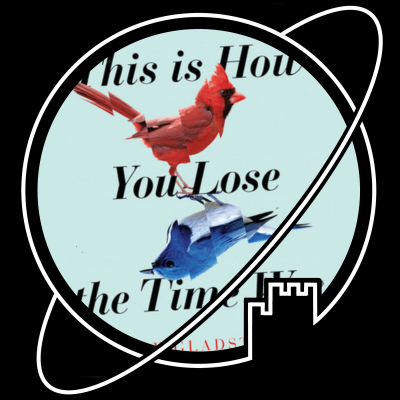
![]()
This is quite an elegant little novella, putting a science-fiction spin on the classic story of Romeo and Juliet. When it comes to worldbuilding it relies mostly on creating atmosphere and giving the reader some hints as to the underlying mechanisms of how the time war is being fought out, but many things are left up to the imagination of the reader. The two main protagonists travel frequently to different times and places, but their activities in these places are never the main focus of the narrative. Instead, these locations form the backdrop against which we see Red and Blue’s relationship develop. Nevertheless, I found the setting very interesting and creative, and I did not mind the lack of technical details and explanations.
What I enjoyed most about the book was the lyrical language and the descriptions of the ways in which Red and Blue manage to write to each other (they almost never write their letters on paper, but find a different way each time to get their messages to reach each other in secret). Both of them are likable enough as characters, and I did care what happened to them. However, on the whole I found I did not connect to them as deeply as I might have liked to and expected, considering that this is mainly a character-driven narrative.
I listened to the audiobook performed by Emily Woo Zeller and Cynthia Farrell, both of whom did a very good job voicing the two protagonists. But because this book switches narrators and settings so often, I regularly found I had missed out on something important if I got distracted even for just a little bit. I think if I had read the book on paper I would have been better able to appreciate some of its smaller details and subtleties.
See also:
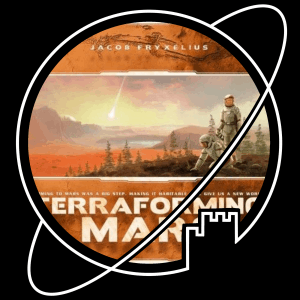
Review: Terraforming Mars – FryxGames
In this 2-3 hour strategic board game, players get victory points for their contribution to the terraforming of Mars and for advancing human infrastructure throughout the solar system.
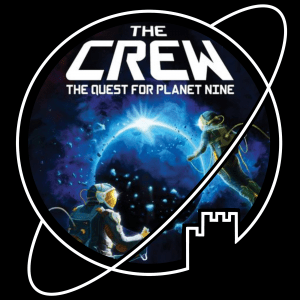
Review: The Crew: The Quest for Planet Nine – KOSMOS
In this co-operative trick-taking game players set out as astronauts on a space adventure looking for a ninth planet.
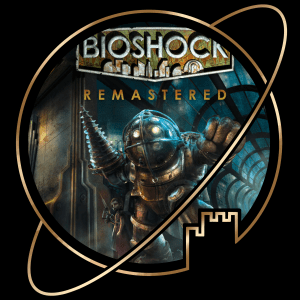
Review: Bioshock – 2K Games
Review: The once magnificent Underwater City of Rapture is deserted, and as you make your way through its dangerous corridors, you slowly discover what happened to what was once Andrew Ryan’s Utopia.

Review: Sweet Tooth – Netflix
Ten years ago, a deadly virus spread through the world while pregnant women suddenly gave birth to hybrid babies, part human, part animal. Gus is one of the first of these hybrids, who, because of his sheltered life, is blissfully unaware of the brokenness of the world.

Curator Question: Fantasy Races
Time to get to know the curators from the Escape Velocity Collection! How? By asking them the questions that really matter! This week’s question is:
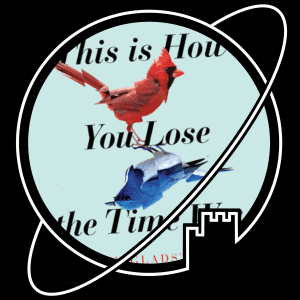
Review: This is How You Lose the Time War – Amal El-Mohtar & Max Gladstone
Two agents fighting on opposite sides of a time war start off a secret correspondence. Writing to each other from the different strands of time in which they are fighting their battles, they start to question what winning the war would really mean to them.

